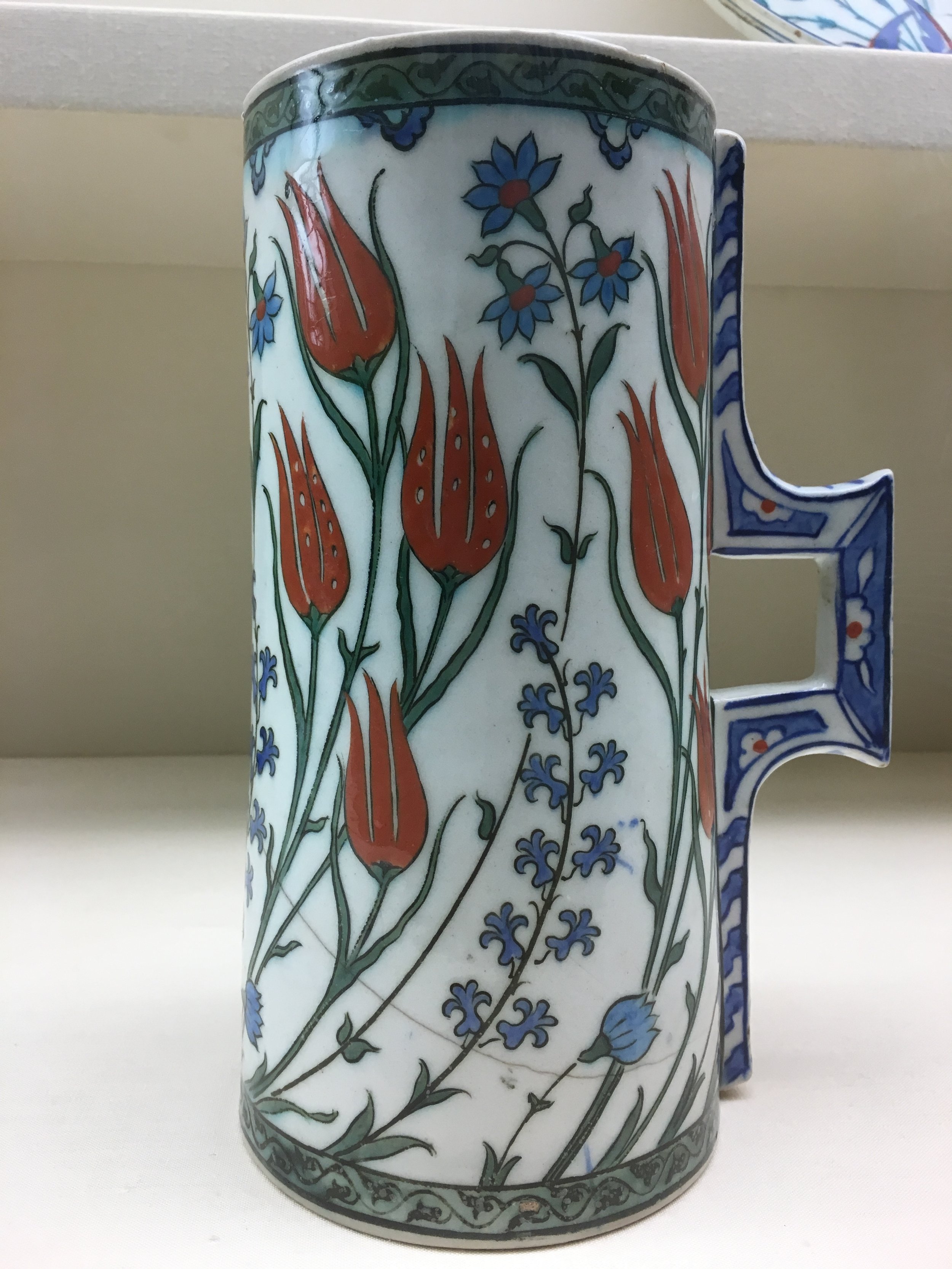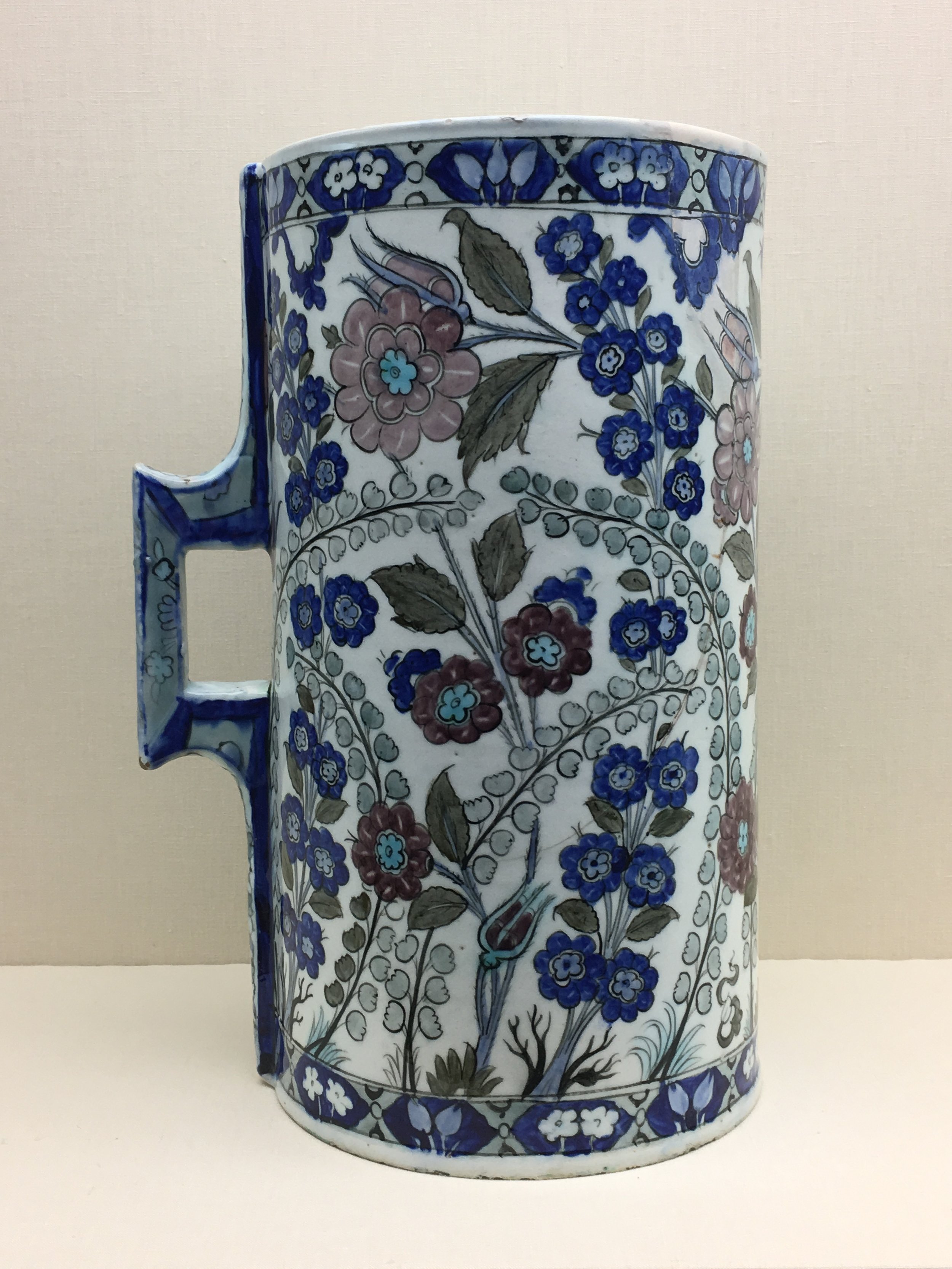Lisbon, often known as the “Queen of the Sea” because of its long association with centuries-long exploration and seafaring, shares another link that is varied, rich and delightful: an age-old love of flowers through art and design from countries far and wide.
This aspect of Lisbon was one that I began to savour as I spent time wandering the up-hill and down-dale streets that plunge to the River Tagus and swoop up again to the hills now covered with wide city blocks. It was another thread too, as I visited my old loves - the Museu Calouste Gulbenkian, the Museu Nacional de Arte Antiga, the Museu Nacional de Azulejo, the Museu de Arte Contemporaneo de Chiado and others. Everywhere I turned, there were flowers, in one form or another. They matched the bright sunlight outside, they echoed the tiles on the buildings down the streets, they added grace and beauty to everything.
In of themselves, these depictions of flowers offered lessons of history, geography, culture. For me, this journey with flowers became a reminder of how linked humans are through this love of nature.
Red tulips on a ca. 1575 Iznik Turkish tankard from the Ottoman period, stonepaste, painted under the glaze. In the Museu Calouste Gulbenkian, Lisboa. (Photograph J. Cook)
Another ca. 1550 Iznik Ottoman Turkish tankard with flowers, stonepaste. In the Museu Calouste Gulbenkian, Lisboa. (Photograph J. Cook)
An Iznik tile panel, second quarter of the 16th century, Turkey, Ottoman period. In the Museu Calouste Gulbenkian, Lisboa. (Photograph J. Cook)
From Turkey to China in the 18th century, the same awareness of nature prevailed.
A pair of Jars from early 18th century, China, Kangxi period, Qing dynasty. Porcelain with “famille verte” enamels. In the Museu Calouste Gulbenkian, Lisboa. (Photograph J. Cook)
A Dish celebrating flowers, China, Qing dynasty, ca. 1730-1745, porcelain. In the Museu Calouste Gulbenkian, Lisboa. (Photograph J. Cook)
About the same time that the Chinese were creating their flower-bedecked “famille rose” and “famille verte” porcelain, the French were weaving marvels of flowers in silk.
Silk, after Phillippe Lasalle, Lyon, ca. 1760-65. In the Museu Calouste Gulbenkian, Lisboa. (Photograph J. Cook)
Other masters of depiction of flowers in silk are the Chinese. I saw this wonderful hand-embroidered coverlet a little later on at the Museu Nacional de Arte Antiga. Then, later echoes of the same inspiration.
Coverlet (detail), silk, embroidered with silk, Chinese, 1768. In the Museu Nacional de Arte Antiga, Lisboa. (Photograph J. Cook)
Detail of silk-embroidered piece of 19th century Portuguese sacerdotal robe, Casa-Museu Medeiros e Almeida, Lisboa. (photography J. Cook)
In another context altogether, I found examples of medieval illuminations, one of my favourite forms of flower celebrations. During a most interesting conference I attended, with its accompanying exhibition, on Francisco de Holanda (1517-85), a Renaissance scholar and artist, friend of MichelAngelo, painter to Portuguese king John III and celebrated thinker, his work on cosmology, geometry and many other aspects was put in the context of his early training: his father, António de Holanda was an illuminator working for the Portuguese court.
Compromisso da Cofrareria da Misericórdia da nossa Cidade de Lisboa, 27 abril de 1520, attributed to António de Holanda, 1480-1557, Santa Casa da Misericórdia, Lisboa. (exhibited at Portuguese National Library, photograph J Cook)
To clear my head from the dizzying collections in the different museums, I explored the streets of older parts of Lisbon. So many buildings are tiled on their facades, and again, many of these tiles are inspired from flowers.
A relatively modern set of tiles on a building facade in the Lapa district, Lisboa (photography J. Cook)
A flourish of wall tiles on a deliciously humorous art gallery R, with its window obscured during an exhibition change. Rua da Esperança Lisboa. (photography J. Cook)
In the National Tile Museum, Museu Nacional de Azulejo, a wonderful place, the stylised flower tiles abounded, old and newer. It was a compendium of different cultural influences as Portugal opened up the world and brought back ideas and creations from far afield in the Far East, South America and beyond.
Camellias were a new source of inspiration as Far Eastern flora became known. This Camellia pattern panel of tiles, ca. 1660-1680, was created in polychromed faience for Nossa Senhora da Esperança, Lisboa. (photography J. Cook)
Another panel of 1660-1680 camellia-inspired tiles in blue and white in the Museu Nacional de Azulejo, Lisboa. (photography J. Cook)
Mogol-inspired tile, underglaze painted, maybe from Bijapur, 1625-1650, from the Monastery of Santa Mónica, Goa. (photography J. Cook)
The late 19th and early 20th century were equally a celebration of flowers, I discovered, in the Lisbon museums - just approaches that were in keeping with new technologies and new optics. Carlos Relvas was a very gifted and successful photographic pioneer in Portugal in the 19th century - wealthy and well-connected, he could afford superb, cutting edge equipment; he constantly introduced innovations to photography in subject matter, technique and presentation. I saw a superb exhibition on him and his work at the Museu de Arte Contemporaneo de Chiado .
Carlos Relvas, Untitled (Leaves), 1869-1877, albumen prints - cabinet cards. Casa de Patudos, Museu de Alpiarca. (photography J. Cook)
In France, at the same time, artists from Fatin-Latour to Monet were depicting flowers that have become beloved of today’s public world- wide.
A 19th century version of flower celebration - this one, a Jug with Flowers, oil on canvas, Henri Fatin Latour, French, 1883. (image courtesy of the Museu Calouste Gulbenkian, Lisboa)
Another pioneer and hugely gifted artist turning to nature in all its forms for his creations was René Lalique (1860-1945). The Museu Calouste Gulbenkian has an enchanting room full of his work; I could quite understand why he had such a devoted following of collectors.
Orchids Diadem, ivory, horn, gold and topaz, René Lalique, ca. 1903-04 (image courtesy of the Museu Calouste Gulbenikian, Lisboa)
The Woods Choker, gold, opals, enamels and diamonds, 1898-99, René Lalique. Museu Calouste Gulbenkian, Lisboa. (Photograph J. Cook)
As I watched Lisbon roll away when I took off from its airport, with the river Tagus coiling inland away from the Atlantic, I reflected that my visit there had been strewn with beautiful evocations of flowers in so many forms. I remembered afresh how man’s love of flowers seems a universal emotion, uniting people of all ages, eras and descriptions. If we can be so moved by the beauty of flowers, why can we not care better for the environment that they need to thrive? And why do we all have to be so divided when there are such amazingly non-controversial objects of inspiration and beauty that can bring us together in harmony?

















